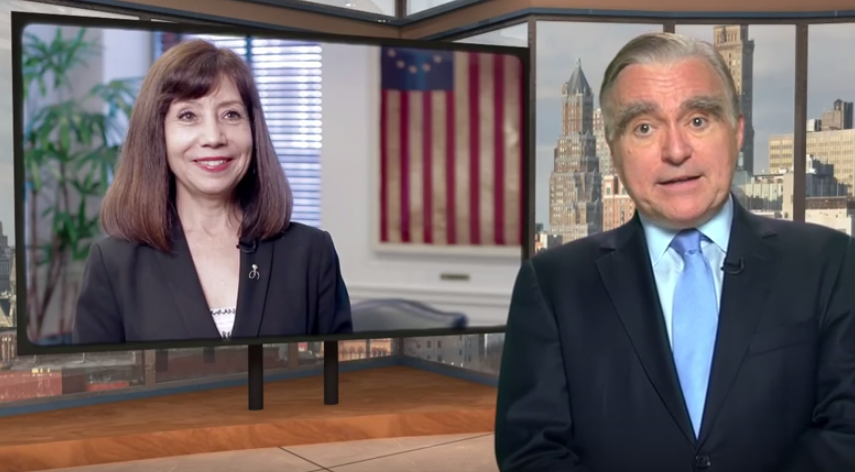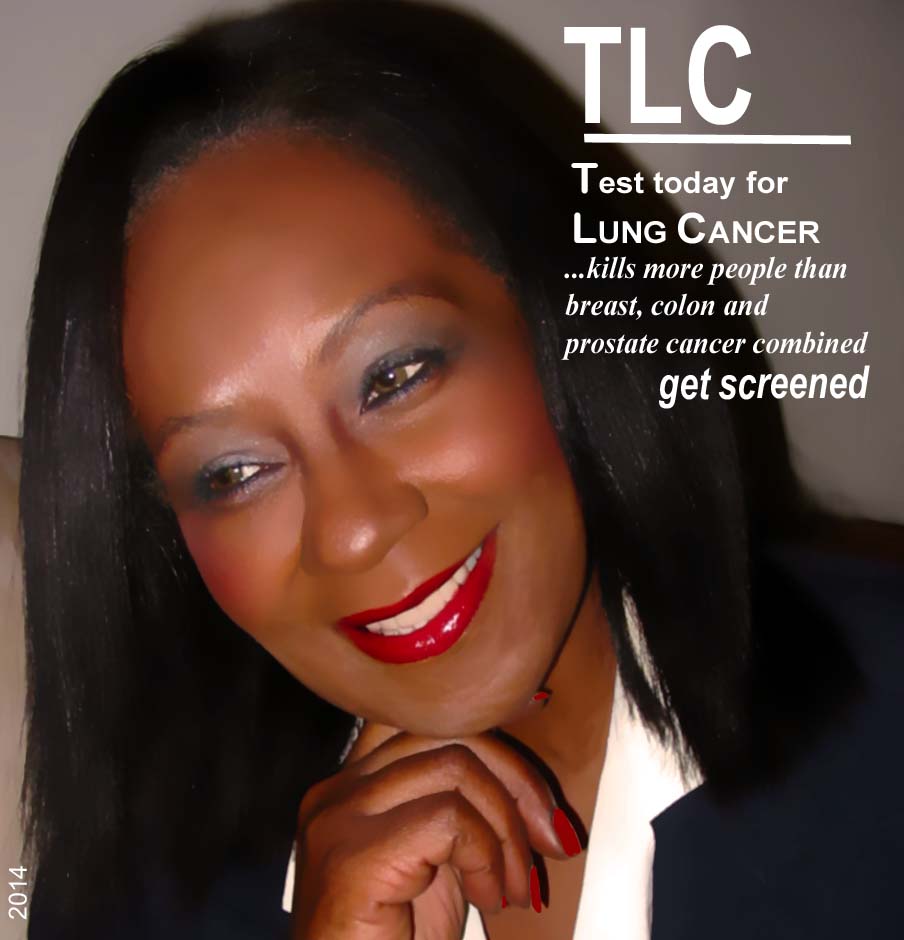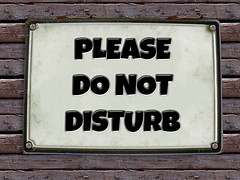Audiences are more sophisticated than ever and can tell when the presenter is performing.
The 12 Mistakes of Public Speaking
Nike's Big Presentation Mistake
5 Warning Signs Your Presentation is in Danger
Public Speaking Success Secret: Stay in Your Lane
8 Tips When Speaking in the Line of Fire
National Speakers Association Winter Conference Sees the Future
Do You Have an Executive Voice?
Public Speaking Lessons from Daymond John
3 Strategies to Conquer Public Speaking Fear
Can You Hear Me Now?
The One Word that Made Me Authentic
10 Tips for Radical Panel Presentations
Guest Blog Post: 5 Ways to Create an Exciting Learning Experience to Keep Your learners Engaged
Eager to keep your students engaged? Rest assured that with the utilization of the latest learning tools, you are going to be able to achieve this target. Guest Blogger, Kamy Anderson is an ed-tech enthusiast with a passion for writing on emerging technologies in the areas of corporate training and education.
Don't Let Others Eclipse Your Presentation
15 Tips to Master Video Presentations
 What do today's business presenters have in common with television anchors? They both have broadcasting skills. With youtube being the number two search engine and companies demanding online learning, public speaking has gone digital. According to Business Insider 2014, “About 50 million people in the U.S. now watch video on their mobile phone." Public speakers who shun the camera will be left behind.
The first step to being a master presenter is to understand the difference between in- person speaking versus video presentations. Here are a few tips for speaking in a digital media world:
What do today's business presenters have in common with television anchors? They both have broadcasting skills. With youtube being the number two search engine and companies demanding online learning, public speaking has gone digital. According to Business Insider 2014, “About 50 million people in the U.S. now watch video on their mobile phone." Public speakers who shun the camera will be left behind.
The first step to being a master presenter is to understand the difference between in- person speaking versus video presentations. Here are a few tips for speaking in a digital media world:
- A video recorded presentation is one way communication. That means you can’t read the audience and pivot in the moment to meet their needs. So it takes a lot of preparation to deliver a compelling message and provide value to your target audience.
- In the case of teleconferencing, appoint a facilitator at each site to manage the technology and to facilitate the meeting. Be aware of delay time and plan for it by practicing longer pauses. Pause and silently count to four. That will allow enough time for the speaker to finish and for the listeners to hear the last word.
- Know the time zone of your audience. It may be 8:00 a.m. in New York, but if it’s 2:00 p.m. in Amsterdam you don’t want to start the meeting with “Good morning”.
- Display a visual agenda. People need a roadmap and it will keep the meeting or presentation focused.
- Have a back-up plan. Be able to continue by telephone if the video fails. It’s a good idea to do a test drive of the technology 15 minutes before the presentation. As a hedge, send the PowerPoint deck in advance.
- Make love to the lens. People don’t know where to look when speaking on skype. When you look directly at the caller, they see you looking down and you lose that eye connection. Try this instead: When speaking to them, look directly at the webcam. When you are listening, look at the caller.It’s uncomfortable speaking to a camera; yet that’s exactly what the presenter needs to do during webcasts and media interviews. In live presentations the presenter feeds off the audience reaction. With video, the presenter imagines the lens is a person. It’s important to maintain a steady gaze. If your eyes are darting you’ll be perceived as nervous or untrustworthy. And practice smiling and talking. Broadcasters do this easily. A serious delivery will weaken the likability factor.
- Video is an energy drain. There is an exchange of energy between a speaker and an audience. When that energy is strong, it’s palpable. That’s not the case with video. As a result, you won’t convey energy the way you do in a live performance. For that reason, you need to pump up your performance on video. In a video the presenter can easily come across as flat. Push your energy higher than normal to have the same intensity level when you’re live and in person.
- Minimize gestures. Wide, sweeping hand movements are distracting on video. Use fewer and smaller gestures. If seated, sit with both feet on the floor and lean forward at a 15 degree angle. Place both hands on the table. This is a confident speaking and listening position. You’ll be perceived as confident and it will stabilize you. Avoid excessive head nodding and jerky movements.
- You are always on stage. If someone else is speaking, chances are you are still in view. Be careful about sloppy behaviors such as slouching, looking at your phone, side talking or looking bored. The presentation isn’t over until the camera is off.
- You’ll look heavier on video. Video is two dimensional which flattens the presenter. I once was videotaping a client for a presentation. It was amazing that when I looked at her directly she appeared slim. When I looked through the camera lens she looked heavier.To manage the widening effect, dress for the camera.Remember that light colors enhance and dark colors diminish. A client of mine was unhappy with her video because she thought she looked heavy. She was wearing a boxy white jacket which gave her a wide appearance. We did a make-over. This time she wore a tapered navy blue jacket which had a slimming effect.Another way to look thinner on video is to stand at a ¾ angle with your hips back. If you’re in a close-up, drop your forehead slightly to avoid a double chin.
- Wear the right colors. White and black are not good colors for video. White creates glare. It’s better to wear off-white or pearl grey. Icy pastel colors look washed out on camera and are not a good choice. Red can bleed or look muddy. A better choice is burgundy. Avoid stripes and large bold patterns. You’ll look like a TV test pattern. When in doubt, blue is a good choice for video. It films well and psychologically blue means trustworthy, conservative, stable.
- Lighting is key. While lighting is important in a live performance, harsh lighting won’t be as damaging. On video, fluorescent lightening will highlight lines and shadows in the face and can also hurt the eyes. Use soft lighting that flatters your face.
- Choose the backdrop carefully. When doing a video presentation always ask about the backdrop. If you’re filming from home, make sure you don’t have messy papers stacked up behind you. If you’re filming off-site, choose clothing that will work with the backdrop. Early in my career I was being filmed for a speaker showcase. I asked the producer if my fuchsia suit would televise well. He said yes. Unfortunately. I asked the wrong question. I should have asked “What color is the backdrop?” When I arrived I found myself in front of an orange curtain. The fuchsia suit bled into the orange and looked terrible on film. This wouldn’t have been an issue in a live presentation.
- You cannot be boring. Engagement is crucial.You have 5-10 seconds to grab attention in a video presentation. The key to success in video presentations is good storytelling and a highly targeted audience who will appreciate the value. Being boring is deadly in any venue. A live audience will show more tolerance by listening longer. If your video presentation is boring the viewer will click off instantly. A video presentation needs to have greater engagement. A measure of engagement, is how many people watch the entire video. According to Industry standards, a 15-20% complete viewing of a 2 minute video is considered a good engagement rate. That means most viewers are not watching the complete video.
- The day of the talking head is over.To increase engagement, keep a fast pace. You need to keep the video moving. Add slides and images while you are speaking. Fly in bullet points as you speak. Keep the presentation brief. If it’s a formal speech aim for no more than 18-20 minutes. Sales presentations need to be crisp, engaging, fast moving, and brief.In my own experiment, I noticed that every time I reached for the fast forward knob, the picture would change. This happened continually as if the videographer was reading my mind. Intrigued, I started to look at the time. The frames were changing every four seconds-the same time I wanted to fast forward.
If you’re not producing video presentations you’re leaving money on the table. Your digital footprint is now an important part of your personal brand. Interviewers are asking for videos. LinkedIn now allows videos to be added to profiles. Video is the ultimate selling tool. It addresses the know, like, trust factor.
Video is not going away. To be current, you need to master video presentations.
What Hillary Clinton Can Teach Us About Using Your Voice
 There’s been talk about Hillary Clinton’s coughing and whether she’s damaging her voice. It made me think of how speakers unknowingly abuse their voices.
Often public speakers yell in order to project. Yelling is not only irritating to listen to, but will cause eventual hoarseness. It causes strain on the vocal folds. Presenters should request a microphone, project from the diaphragm, and not from the neck muscles. And incessant coughing can also cause damage. Coughing causes the vocal folds to forcefully slam together.
There’s been talk about Hillary Clinton’s coughing and whether she’s damaging her voice. It made me think of how speakers unknowingly abuse their voices.
Often public speakers yell in order to project. Yelling is not only irritating to listen to, but will cause eventual hoarseness. It causes strain on the vocal folds. Presenters should request a microphone, project from the diaphragm, and not from the neck muscles. And incessant coughing can also cause damage. Coughing causes the vocal folds to forcefully slam together.
One of the bigger problems for professional and public speakers is laryngopharyngeal reflux, an inflammation near the back part of the larynx due to acid rising to that point. Thirty-five million people in the United States have acid reflux.
“This inflammatory condition causes the vocal folds to function less efficiently leading to vocal fatigue and poor projection,” states Dr. Thomas Murry, clinical director, professor of speech pathology in otolaryngology at the Voice and Swallowing Center of Columbia Presbyterian Medical Center, Columbia University. Reflux is most common among speakers because so many speakers are on the go, stressed and may have poor diets. Being aware of the symptoms of reflux can help speakers take preventative steps to take care of the problem.
The big five symptoms are:
- Vocal fatigue
- Lack of projection
- Hoarseness as the day wears on
- Throat clearing
- Increased phlegm in the throat
Preserving the Voice
To preserve the voice, don’t constantly clear your throat or talk over noise. Instead, Murry recommends the silent cough technique.
The silent cough technique is a way to clear the throat without violently banging the vocal folds together. The silent cough is done by breathing in air and blowing the air out fast through your throat and mouth without making a sound. Immediately after the silent cough, you should tuck your chin down toward your chest and make a strong swallow. The silent cough often clears mucous that clings to the vocal folds or near them. The silent cough is an important element of vocal hygiene and helps to prevent unnecessary trauma to the vocal folds. It is especially important to use the silent cough after surgery to the vocal folds.
If the symptoms of reflux continue, go to the doctor before the problem becomes severe.
Another common physical voice problem is vocal paresis, a weakness in one or both vocal muscles manifesting in breathiness or fatigue. Both folds must come together symmetrically to produce a clear, resonant voice. Vocal paresis can be caused by a flu or viral infection. When the nerve is inflamed, the condition can last for six months to a year, causing the speaker to change habits to adjust to the inflammation. A monotone may be an indicator of a minor defect or partial paralysis. Also, public speakers who have difficulty projecting could have some vocal fold asymmetry. Tape yourself and listen to how you sound. Also, be aware if you find people asking you to talk louder. This may be an indication that you are suffering from vocal paresis.
Breathiness and Hoarseness
Women are more inclined to get polyps or nodules, which are growths that prevent complete closure of the vocal folds and create breathiness. “In females, the back part of the vocal folds never completely closes due to the way they are formed. So the female voice is always going to be a little bit more breathy than the male’s because of anatomy,” states Murry.
If you are suffering from breathiness, take action and get checked out. It is always better to be safe than sorry. The definition of the term “frustrated and feeling sorry for yourself" is to wake up to find that you’re hoarse when you have a big speaking engagement.
When hoarseness is the problem, first determine that there is no hemorrhage. Then start a process of hydration and steam. Public speakers should travel with a facial steamer. When staying in a dry hotel room, opera singers use them every hour for five minutes. Alternatively, you can make boiling water in your coffee pot, pour it into the ice bucket, and throw a towel over your head to reap the benefits of steam.
To avoid becoming hoarse, avoid alcohol, chocolate and caffeine before a speech. They will dehydrate the mucous membranes, causing hoarseness. Finally, after an all-day motivational program, get plenty of rest and drink lots of water. Before you climb into bed, toss out those mint chocolates on your pillow; they are a double whammy because the mint relaxes the lower esophagus and allows acid to come up.
Making a difference in the lives of your audience is done with your instrument—your voice. With proper breathing, voice training and vocal hygiene, your voice will be strong, healthy and you’ll master true vocal power.
How to Give a Eulogy When You're Not a Public Speaker
 What do you do when a loved one dies and you're the person to give the eulogy? Last weekend I attended the memorial service of my friend, Linda who lost her battle to lung cancer at the age of 63.
Memorial services are usually bittersweet. The service was beautifully inspiring and sad at the same time. The tributes from her sorority sisters gave an insight into her personality and the reader of her legacy left a powerful impression of Linda's contribution of the world. The soloist sang Linda's favorite song with feeling and his voice filled up the room with love.
What do you do when a loved one dies and you're the person to give the eulogy? Last weekend I attended the memorial service of my friend, Linda who lost her battle to lung cancer at the age of 63.
Memorial services are usually bittersweet. The service was beautifully inspiring and sad at the same time. The tributes from her sorority sisters gave an insight into her personality and the reader of her legacy left a powerful impression of Linda's contribution of the world. The soloist sang Linda's favorite song with feeling and his voice filled up the room with love.
The preacher read a passage from the Bible and eloquently spoke about Job, He told us that we had not lost anything. That Linda had been given to us as a gift and we shared that gift for 63 years. His sermon and his delivery were inspiring, uplifting, and impassioned.
While the preacher was a trained public speaker, the day may come when you are tapped to give the eulogy. You don't have to be experienced in public speaking to be effective. Here are six tips to remember when memorializing a loved one's life:
Develop a Time Line. If you don;t know where to begin, draw a horizontal line on your paper and mark down significant events or memories. It can be in 5 or 10 year intervals or any time frame that works.
Discover a Theme. Once you look at the timeline, you may see trends or stories that can be folded into a them. Ex. You always did it your way. You always went the extra mile.
Sequence your Ideas.Next, organize the most important and meaningful events and stories in a sequence that flows and is easy to follow. Don't give a biography of the person's entire life. Keep it brief.
Keep it Positive. Don't dwell on the failings or negative times unless it culminates in a story of the hero's journey. Interjecting humor can help lighten the atmosphere.Talk about the deceased in a positive light but do be genuine. What contributions did the departed make? How did the loved one make people feel? How would that person want to be remembered?
Speak from the Heart. It's fine to use a script or notes, however; tell stories. Don't sound like you're reading a text. If you knew the person, share your experience. Relive the moments and events and give people a sense of the person. And it's okay to cry. Have people nearby and take a minute to compose yourself and continue. The audience will understand.
Bury your Fear. Put your focus on telling the person's story and not on your nervousness.Jerry Seinfeld said it best when he quipped, "Most people would rather be in the casket than giving the eulogy." Remember it's not about you.It's about them.
What a Cashier Taught Me about Presentations
 I went to the supermarket to pick up a few items. Not wanting to wait in line, I found a cashier who was without customers. She had her back turned as she was shuffling a deck of coupons. I approached her and stood there expecting her to stop what she was doing to serve me. She did not. She continued to organize the coupons and never said a word to me or attempted to make eye contact. She placed a rubber band around the coupons, put them in the drawer and without saying a word, started to ring up the two items.
I went to the supermarket to pick up a few items. Not wanting to wait in line, I found a cashier who was without customers. She had her back turned as she was shuffling a deck of coupons. I approached her and stood there expecting her to stop what she was doing to serve me. She did not. She continued to organize the coupons and never said a word to me or attempted to make eye contact. She placed a rubber band around the coupons, put them in the drawer and without saying a word, started to ring up the two items.
It was like I wasn't there.
Viewing this as an experiment in communication, I said nothing. Neither did she. After ringing up the groceries she spoke for the first time. "$6.07, " she said. As I was digging for change she turned and talked to the other cashiers. I paid the bill and left. Talk about feeling invisible.
Yes, she was a young person being paid minimum wage but that's not an excuse for being rude. (Although I doubt that was her perception). I've had friendlier and more helpful service from others in her position. It made me think about what was being communicated by this cashier. By not acknowledging that I was standing in front of her I felt ignored and not valued as a customer. She had no idea of the impact of her silence and lack of friendliness. By not greeting a customer and avoiding eye contact, she tarnished the brand of the store. There was little difference between doing business with her and scanning my own groceries in the self service line. I left with a negative feeling about the supermarket although I've shopped there many times.
My husband reminded me that he doesn't like going to our local Thai restaurant even though the food is good and inexpensive. He dislikes the waitress who doesn't smile and looks annoyed all the time. He calls her "a pill". Think about it. He doesn't want to eat where the food is good because he doesn't like her attitude. She non-verbally communicates that the customers are an annoyance to her. She's creating a negative feeling.
How often do we minimize soft skills in the business world? Something as seemingly basic as greeting a person or making eye contact can have a big impact. It's part of your presentation. In graduate school, I waited tables at a New York City fast food restaurant in the middle of Times Square. (That's another story). I quickly learned the ROI of interpersonal skills. A greeting, friendly tone, and a smile could yield a better tip.
There's a barista at my local Starbucks named Gus. He remembers everyone's name. When I walk in the store, he starts making my green tea because he knows my order. Gus makes customers feel special and I always ask for him.
So the point is this. We are always presenting ourselves and the organization we represent. McDonald's understands this. Every entry level worker greets each customer by looking at them and saying "Welcome to McDonalds". They are well trained because the company recognizes that communication impacts their brand. It's the intangibles that drive the tangible. The next time you have a meeting or presentation, be fully present, acknowledge the other person and whatever your topic, serve it up with a smile.
Public Speaking in Soundbites
Are you able to get to the point? Do you know how to speak in soundbites? Speaking in soundbites help your message land. I created a video book of public speaking soundbites from a recent presentation:
How many times have you heard a presentation only to have your eyes glaze over? The speaker takes too long to get to the point and your brain simply shuts off. Overtalking is deadly when trying to get approval for an idea or when selling your product or service.
And it happens in networking meetings.People deliver a verbal resume instead of an elevator pitch. By the time it's the last person's turn it's time to go home. What many people don't understand about public speaking and clarity is that less is more. Some public speakers give so much detail that the listeners need a machete to cut through all the verbal weeds. To avoid going down a rabbit hole and losing your audience forever, try speaking in soundbites instead.
A soundbite is a short sentence or phrase that is easy to remember. I media train clients who have television interviews to speak in soundbites.The goal of a media interview is to provide "quotable quotes" that contain your message points. Soundbites make the message memorable.
Contrast these two messages:
"You need to learn to be a better speaker because you'll have to go on interviews and sell your ideas and there is a lot of competition and it will be harder to get the job or get promoted if other people speak better and you don't sound confident or clear, or concise so you should practice or take classes so you're not left behind."
"Speaking is the new competitive advantage"
Which do you remember? Which can you repeat?
So when it comes to communication and making the message land, Less is More.
What's your favorite sound bite? Comment below.



